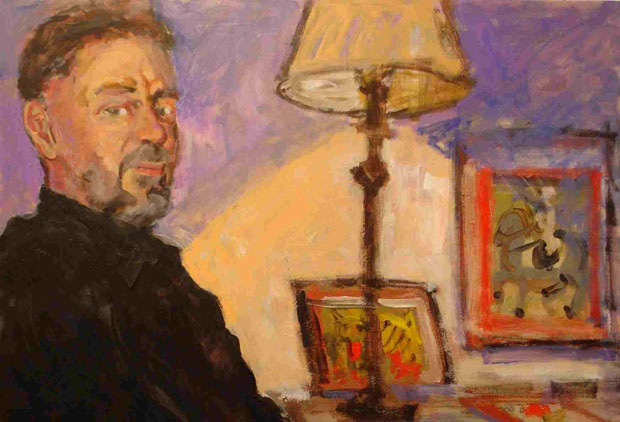David Carrier
An American philosopher and art and culture critic. He was formerly Champney Family Professor, a post divided between Case Western Reserve University and the Cleveland Institute of Art, and prior to that a professor of philosophy at Carnegie Mellon University. He has written extensively on the history and philosophy of art writing, raising questions about the relativism of art writing in different eras by comparing texts written about the same artwork and analyzing changing styles of interpretation. His works include Principles of Art History Writing (1991), The Aesthete in the City: The Philosophy and Practice of American Abstract Painting in the 1980s (1994), Museum Skepticism: A History of the Display of Art in Public Galleries (2006) and A World Art History and Its Objects (2009). He has written for Apollo, artcritical, ArtForum, the Brooklyn Rail and the Burlington Magazine.
Email: david.carrier7@wildart-book.info[@]gmail.com
Website: www.davidcarrierartwriter.com
Joachim Pissarro
Currently the Bershad Professor of Art History and Director of the Hunter College Galleries at the City University of New York (CUNY). He was formerly a Curator in the Department of Painting and Sculpture at The Museum of Modern Art (MoMA) in New York. His teaching and writing presently focus on the challenges facing art history due to the unprecedented proliferation of art works, images, and visual data. His recent writings include the book Individualism and Inter-Subjectivity in Modernism: Two Case Studies of Artistic Interchanges: Camille Pissarro and Paul Cézanne: Robert Rauschenberg and Jasper Johns (2006) and the essay 'Joseph Beuys: Set Between One and All' (2010). In 2012 he co-curated the exhibition Notations: The Cage Effect Today, at the Hunter College Times Square Gallery, organized to coincide with the centennial of John Cage’s birth.
Email: jpissarr@wildart-book.info[@]hunter.cuny.edu
Website: www.joachimpissarro.com
From phaidon.com:
The Manhattan meal that inspired Wild Art
Wild Art co-author David Carrier explains how he and Joachim Pissarro got the idea for their new book

"It’s always revealing to see what people do not notice. In The Golden Bowl Henry James describes a prince who never notices people from classes below his own. Often racism and sexism involves the failure of privileged people to notice others, who are outside of their world. Wild Art poses similar challenges. It is everywhere, but many people don’t notice it.
"A few years ago we, Pissarro and I, were dining at a small French restaurant, Boeuf a la Mode in Manhattan. We were talking about a very preliminary version of our book, Wild Art. On the wall was a painting, typical restaurant art. We didn’t even have to turn to see it—the painting was right in front of our eyes. Normally art historians do not scrutinize such paintings. They are trained to avoid restaurant art unless, of course, it is by some ‘name’ artist. But on this occasion, we happened to look and so started to ask questions: what was the real subject of this painting? How good was it? We were treating it as if it were a work of art in a museum, like one of Picasso’s well-known images of bulls. In fact, we realized, we both thought that it was a good painting.

"More recently, this restaurant closed. The painting had been there for some decades. No one in the staff could recall the name of the artist. In fact, this was a large painting- not easy to miss once you looked!
"This experience changed our lives permanently. And when we discussed it with friends and colleagues, it changed their lives also. We found ourselves looking at restaurant and hotel art; at tattoos; at graffiti—at many forms of Wild Art. Soon then we found other examples. Dean Cornwell’s Murals on 54 are an elaborately detailed history painting, which tells the story of Sir Walter Raleigh. Although they are located in the restaurant of the Warwick hotel, directly across 54th Street from MoMA, it’s very unlikely that Cornwell will be given a show there, even though many people who visit that museum or work there have dined in front of his art.
"Wild Art is meant to teach everyone to open their eyes. There is so much art to see outside of museums! Most books about art aim to enrich your experience of art world art. Ours seeks to change how you see art everywhere outside of the art world.
Read our introduction to Wild Art and check out a gallery of fantastic images from the book.